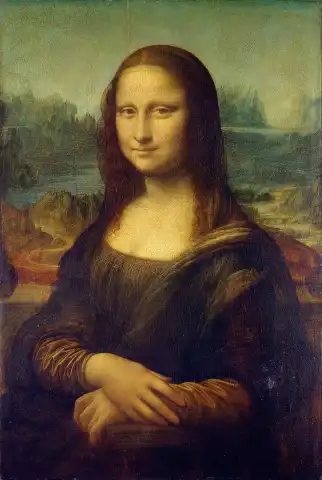Delve into the Enigmatic World of Giorgio de Chirico's Metaphysical Paintings


Giorgio de Chirico, a pioneering figure in 20th-century art, is renowned for his enigmatic style known as metaphysical art. He was born in Greece in 1888 to Italian parents and he and his family moved around at various points in his life. Around this time de Chirico began reading the work of German philosopher Friedrich Nietzsche, whose writings would prove hugely influential, and then in 1911 he moved to Paris, where his brother Andrea (who would soon change his name to Alberto Savinio) was already living. This unique artistic movement, born in the early 20th century, captivated the art world with its dreamlike and unsettling imagery. Although most famous for his eerie metaphysical paintings, de Chirico went through many complex periods to find his artistic style, all the while exploring deep philosophical concepts that affected his creative work.
Metaphysical Painting: A Surrealist Precursor
Giorgio de Chirico was impressed by the grandeur of Italian piazzas particularly those in Turin, he painted architectural scenes that cast long shadows, giving the paintings an eerie atmosphere which is rather threatening at times, he was obsessed with the presentation of an enigma- ‘poetic revelations, the eternal meanings of things as he saw it or the enigma of things and bodies.' His landscapes and dark-toned skies created a sense of the mysterious – De Chirico's use of titles such as The Enigma of the Oracle and the Enigma of an Autumn Afternoon helped to further the mysterious character of the work. Before the rise of surrealism, Giorgio de Chirico's metaphysical paintings were groundbreaking. They challenged traditional perspectives, blurring the lines between reality and illusion. Giorgio de Chirico's works often featured unsettling juxtapositions of objects – classical statues, mannequins, and architectural elements – cast in long, dramatic shadows. These compositions created an atmosphere of eerie stillness and profound mystery. In 1911, when Giorgio de Chirico painted the first examples of Pittura Metafisica, or Few know what it feels like to live at what the French call the fin de siècle, or the end of an era. This period (June 1915-December 1918) provided an opportunity for painters Carlo Carrà and Giorgio Morandi to get to know the two brothers, thus resulting in the creation of what was later to be known as the “metaphysical movement” which brings the exhibition to a close.
Key Characteristics of De Chirico's Metaphysical Art
- Strange Juxtaposition: De Chirico masterfully combined everyday objects in unexpected and unsettling ways. A classical sculpture might share space with a child's toy, or a train might inexplicably appear in a desolate piazza. This unexpected pairing of elements creates a sense of disorientation and forces the viewer to question the logic of the scene.
- Long, Dramatically Cast Shadows: Shadows play a crucial role in Giorgio de Chirico's paintings, creating an atmosphere of unease and emphasizing the distorted sense of space. These elongated shadows distort proportions and create a sense of unease, as if the world itself is somehow out of balance.
- Eerie Stillness: De Chirico's compositions often depict scenes of profound stillness, devoid of human activity. This lack of movement contributes to the unsettling and dreamlike quality of his work. The absence of human life in these otherwise familiar settings creates a sense of emptiness and isolation, inviting the viewer to contemplate the underlying meaning of the scene.
- Architectural Elements: De Chirico frequently incorporated architectural elements such as arcades, piazzas, and classical buildings. These structures often appear distorted or incomplete, adding to the sense of disorientation. The inclusion of these architectural elements, often rendered with a sense of grandeur, creates a stark contrast with the unsettling atmosphere of the paintings.
The Influence of De Chirico on Surrealism
De Chirico's metaphysical art had a profound impact on the development of surrealism. Surrealism meaning itself draws heavily from the exploration of the subconscious and the dreamlike, key elements in de Chirico's work. De Chirico's innovative approach to composition and his ability to create unsettling and dreamlike atmospheres paved the way for the surrealist movement. One of de Chirico's “late” works (rejected by the Surrealists and many others, along with everything else the artist made after his early Metaphysical work of 1910–1918), it looks pretty fresh to many art historians today. According to art historian Jennifer Mundy, "Carrà adopted de Chirico's imagery of mannequins set in claustrophobic spaces, but his works lacked de Chirico's sense of irony and enigma, and he always retained a correct perspective".
Famous De Chirico Paintings
- "The Song of Love" (1914): This iconic painting with metaphysical style features a mannequin head perched atop a pedestal, casting a long shadow across a desolate piazza. The juxtaposition of the lifelike mannequin head with the lifeless piazza creates a haunting and unsettling image.
- "The Enigma of an Autumn Afternoon" (1914): This painting depicts a haunting scene of a deserted piazza with a child's toy and a classical sculpture. The inclusion of the child's toy adds a touch of innocence to the otherwise somber scene, creating a poignant contrast.
- "The Nostalgia of the Infinite" (1913): This early work showcases de Chirico's signature style with its elongated shadows and unsettling juxtaposition of objects. The vast, empty space of the piazza creates a sense of longing and isolation, reflecting the title of the painting.
Exploring the Enigma of De Chirico's Art
De Chirico's metaphysical paintings continue to captivate viewers with their enigmatic power. They invite contemplation and introspection, challenging our perceptions of reality and the subconscious. His work also influenced a number of noted writers, including Sylvia Plath, John Ashbery, Mark Strand, and Gabriele Tinti. By exploring the works of this groundbreaking artist, we gain a deeper understanding of the evolution of 20th-century art and the enduring power of the human imagination. His work was included in several major exhibitions and he caught the eye of the influential art critic Guillaume Apollinaire, who helped him acquire an art dealer.
De Chirico's Impact on 20th Century US Artists
De Chirico's influence extended beyond European art circles. Many 20th-century US artists were captivated by his unique style, and his work can be seen to have influenced the development of American art movements such as Surrealism and Precisionism.
Further Exploration
- Visit a museum or gallery to experience de Chirico's paintings in person.
- Read biographies and critical analyses of de Chirico and his work.
- Explore the works of other surrealism artists famous for their contributions to the movement, such as Salvador Dalí and René Magritte.
- Delve deeper into the history of surrealism modern art and its impact on contemporary culture.
By engaging with de Chirico's metaphysical artwork, you can embark on a journey of artistic discovery and gain a new appreciation for the power of the human imagination.
Subscribe to our newsletter to get updated and enjoy a 10% voucher
Apr 26 2024 / Biography Art History



